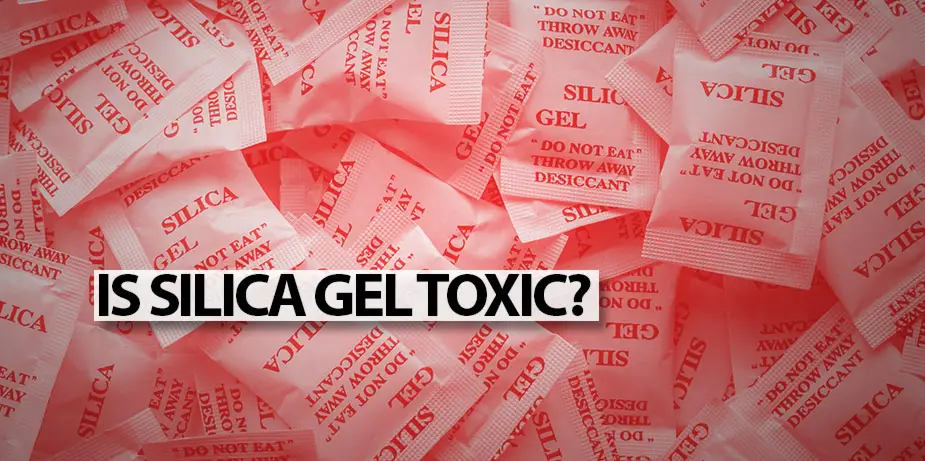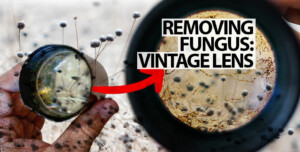Silica gel, composed of amorphous Silicon Dioxide (SiO₂), is a versatile desiccant known for its ability to absorb moisture, odors, and oils. Shaped into tiny beads or granules, it’s a non-toxic, non-poisonous material widely used to safeguard electronics, camera equipment, and various other items from corrosion, mildew, and damage. But really… is Silica Gel Toxic? The packets say DO NOT EAT, so maybe silica gel is poisonous? Let’s explore its composition, and effect on its environment.
What is the impact of Silica Gel usage, on humans and pets? And how does it affect camera equipment when used over extended periods? As photographers, we often find ourselves reaching for those small packets of Silica Gel tucked away in our camera bags. But are they safe? Can they harm our precious gear?
In this comprehensive guide, we’ll explore the ever-popular question, ‘Can you eat silica gel?’ and delve into the facts about Silica Gel toxicity. We’ll examine its effects on camera equipment and its safety for humans and pets. Whether you’re a professional photographer or a curious consumer, this article will shed light on the essential aspects of Silica Gel, its uses, and its safety
What is Silica Gel Made Of?
Silica gel is primarily made of silicon dioxide (SiO₂), a naturally occurring compound found in the Earth’s crust. It’s the same material that makes up quartz, sand, and various types of rocks. It is an amorphous (non-crystalline) form of Silicon Dioxide. Silicon Dioxide is a naturally occurring mineral, but it can also be produced synthetically. Silica gel is a non-toxic desiccant (i.e., a substance that absorbs moisture), and has a variety of uses. It is available in many forms and shapes, such as beads and granules.
Chemical Composition:
- Silicon Dioxide (SiO₂): This is the main component of silica gel. It consists of two oxygen atoms bonded to a single silicon atom.
- Pore Structure: Silica gel is not just solid SiO₂; it has a porous structure that gives it a high surface area, allowing it to absorb moisture effectively.
Why is Silicon Dioxide Non-Toxic?
- Inert Nature: Silicon dioxide is chemically inert, meaning it doesn’t react with most chemicals, including those in the human body. This inertness contributes to its non-toxicity.
- Natural Occurrence: SiO₂ is a major component of sand and rocks and is commonly found in nature. It’s also a part of various food items as a food additive (E551), where it’s used to prevent clumping.
- Non-Soluble: SiO₂ doesn’t dissolve in water or most biological fluids, so it doesn’t interact with the body’s chemistry in a way that could lead to toxicity.
- FDA Approval: The U.S. Food and Drug Administration (FDA) recognizes silicon dioxide as a safe substance when used in accordance with good manufacturing practices.
Why is Silica Gel Non-Toxic?
- Amorphous Structure: Silica gel is an amorphous form of SiO₂, meaning it lacks a crystalline structure. This is different from crystalline silica, which can be harmful when inhaled. The amorphous structure of silica gel contributes to its safety.
- Absorption Capability: Silica gel’s ability to absorb moisture doesn’t involve any chemical reactions that produce harmful substances. It simply traps water molecules in its pores.
- No Harmful Additives: Pure silica gel doesn’t contain any toxic additives. However, some indicating silica gels may contain substances like cobalt chloride to signal when the gel is saturated. These additives can be toxic, so it’s essential to know the type of silica gel you’re handling.
Is Silica Gel Toxic?
Silica gel is considered to be non-toxic. It is not a hazardous material. Silica Gel does not release any toxins into the air, and the material itself is chemically inert (please see references below for details).
While it’s considered non-toxic, it is also important to note that Silica Gel should not be ingested. Silica Gel is not poisonous, or toxic if ingested, and in low volumes, it won’t do anything at all. If Silica Gel is accidentally ingested in a slightly higher volume, it can cause gastrointestinal irritation and discomfort, but it is still not life threatening (Silica Gel Toxicity is not a thing).
Silica Gel Packets as a Choking Hazard
It is dangerous as a choking hazard though, which is why the small packets have those printed warnings – don’t swallow the packets! It is for this reason that you should keep Silica Gel away from children and pets – it can be a choking hazard to them if swallowed. Remember, it is the packets that contain the Silica Gel that is more of a choking hazard and is the main reason why they’re marked “do not swallow”.
In short, you will not die if you eat Silica Gel, unless you choke on it.
NOTE: Blue indicating Silica Gel is coated in Cobalt-Chloride, which is considered to be toxic. Cobalt Chloride in the Blue Silica Gel may cause nausea or vomiting. Seek medical aid in this case.
What is Silica Gel Used For?
Silica Gel is often used in packaging to absorb moisture and prevent spoilage. It is also used in the food industry to keep food fresh and prevent mold growth. Additionally, Silica Gel is used in the pharmaceutical industry to keep drugs and other products dry and free from contamination. Silica gel is also used in the automotive industry to absorb moisture and prevent corrosion.
Does Silica Gel Harm Your Camera?
Silica gel can be used to protect cameras from humidity and fungus damage. It does not harm the camera as it is inert and does not give off gases. This means that it should not affect the performance of the camera. However, photographers should be mindful to change or recharge the Silica Gel frequently, as it will absorb moisture from the air over time and become less effective.
When using Silica Gel to protect your camera, it is essential to make sure that the Silica Gel and equipment to be protected are stored in an airtight container. This will help to ensure that the gel does not absorb excess moisture from atmospheric air and become less effective. Additionally, it is important to check the Silica Gel regularly to make sure that it is still effective and has not become saturated with moisture. Indicating Silica Gel is useful for this as it gives us a visual indication of when the Silica Gel is saturated.
Is Silica Gel Flammable?
Silica Gel is completely non-combustible/non-flammable, and as a result, it does not add any risk to your camera or other electronic equipment.
Is Silica Gel Harmful To Skin?
Silica Gel is considered to be non-toxic and non-irritating when handled, even for extended periods. However, it is possible for Silica Gel dust particles to get into the eyes and cause irritation or discomfort. Therefore, it is important to wear eye protection when handling large amounts of Silica Gel, especially if there is Silica Gel in dust form.
If you do face any irritation from handling Silica Gel, stop all contact with it, wash the affected area with mild soap & warm water, and dry it off. If the irritation persists, contact a doctor.
Is Silica Gel Poisonous?
Silica Gel is not poisonous, as it is an inert chemical. Ingestion of small amounts of Silica Gel is not likely to cause significant harm (see references below). In fact, food-grade Silica Gel is used for food preservation, and may even come into direct contact with the food we consume. There can be potential risks associated with ingesting large amounts of Silica Gel, so it is best to avoid ingestion altogether.
If Silica Gel is ingested in small or large volumes, it is important to seek medical attention immediately. Symptoms of Silica Gel ingestion may include nausea, vomiting, abdominal pain, and diarrhea. In some cases, Silica Gel can cause an obstruction in the digestive tract, which can be a serious medical emergency.
What Happens if Silica Gel is Eaten?
If a Silica Gel packet is mistaken for salt or sugar and accidentally eaten, there is usually no cause for worry. Ingestion of small amounts of Silica Gel is not likely to cause significant harm. However, large amounts may cause nausea, vomiting, and diarrhea.
If a large amount of Silica Gel is ingested, seek medical attention immediately as it could cause digestive blockages. However, just because Silica Gel is not toxic, does not mean that it is edible.
Silica gel is not toxic, but it can cause an obstruction in the digestive tract if it is not expelled properly. If a person experiences any symptoms of an obstruction, such as abdominal pain, nausea, vomiting, or difficulty swallowing, they should seek medical attention immediately.
Is Silica Gel Safe to Use for Long Periods?
Silica Gel is generally considered to be safe to use for long periods of time. It does not release any toxins into the air and does not cause any harm when handled. However, it is important to change the Silica Gel frequently as it gets saturated with moisture, so that it can continue to absorb moisture from the air effectively.
It is also important to store Silica Gel in a sealed container when not in use. This will help to prevent the Silica Gel from becoming saturated with moisture and losing its effectiveness. Additionally, it is important to keep Silica Gel away from children and pets, as it can be a choking hazard if ingested.
Understanding the Potential Hazards of Silica Gel
There are no real hazards when it comes to Silica Gel as it is considered a non-toxic, benign material that can be safely used for extended periods without any significant health risks. However, it is important to understand the potential minor hazards associated with Silica Gel and take precautions when handling it.
Inhalation of Silica Gel can cause irritation to the lungs and respiratory system. It is important to ensure that the area is well-ventilated when handling significant volumes of Silica Gel, and to wear a face mask if necessary. Remember to keep Silica Gel away from children and pets, as it can be a choking hazard if ingested.
How Long Can Silica Gel Be Used and Reused?
Silica Gel can be used and reused for very long periods of time before it needs to be replaced. It can be recharged 500+ times without losing its ability to absorb moisture adversely.
Generally speaking, Silica Gel can be effective for up to six months when used in an airtight container before needing to be replaced. It is important to check the Silica Gel regularly for any signs of moisture buildup or degradation, in which case it should be replaced.
When replacing Silica Gel, it is important to use a new, dry batch of it… Silica gel that has been exposed to moisture or other contaminants can be less effective and may not be able to absorb moisture as effectively. Additionally, it is important to store Silica Gel in a cool, dry place to ensure that it remains effective for as long as possible.
Precautions and First Aid Measures When Handling Silica Gel (non-Indicating)
Although not typically dangerous, safe handling of Silica Gel is recommended, and in the event of accidental ingestion or discomfort, some precautions should be taken.
If you inhale Silica Gel:
In the unlikely event that you inhale silica gel, immediately move to an area with fresh air. Loosen any tight clothing and ensure comfort. If a cough or other symptoms develop, or if there’s an unusually severe reaction, seek medical assistance promptly.
If the Silica Gel comes into contact with your skin and causes irritation:
If silica gel particles come into contact with your skin, wash the affected skin and hands with soap and plenty of water to remove any particles. Though skin irritation from silica gel is unlikely, if it does occur or if you’re concerned, consult a healthcare professional.
If the Silica Gel gets into your eyes:
In the event that silica gel gets into your eyes, protect the unaffected eye and gently flush the affected eye with water for 15-20 minutes. Remove contact lenses while rinsing. If irritation persists or if you’re worried, seek medical attention.
If you swallow Silica Gel:
Should silica gel be accidentally swallowed, rinse your mouth with water. Do not induce vomiting. While silica gel is generally non-toxic, if a large amount is swallowed and discomfort persists, or if vomiting occurs, seek immediate medical attention. Never give anything by mouth to an unconscious person.
Although silica gel is largely non-toxic, intentional ingestion or inhalation should be avoided. It can pose a choking hazard, especially to young children, so ensure it’s kept out of their reach. Always err on the side of caution and seek medical attention if any unusual symptoms occur after exposure.
In Conclusion
Silica gel proves time and time again, to be an indispensable ally for photographers. This is particularly true when operating in humid conditions. Its superb moisture-absorbing properties protect delicate camera equipment from damage due to moisture and humidity.
It’s crucial to distinguish between the safe variants of silica gel: white or orange indicating silica gels are safe. However, the blue variant, contains toxic Cobalt Chloride, and should be used with care. When used correctly, silica gel poses no harm. Remember, though, it’s not intended for ingestion or eye exposure.
In essence, sensible use of silica gel goes a long way in maintaining the longevity and quality of your camera gear. Despite its simplicity, it can have a great impact on your equipment’s performance (for the better), helping you to capture beautiful moments unimpeded. So keep it handy, but out of reach from children and pets, and your camera gear will thank you!
References
- Non-Indicating Silica Gel Safety Data Sheet (Fisher Scientific, 2015)
- Cobalt Chloride Safety Data Sheet
- Silica Gel – WebMD
- What Happens if I Eat Silica Gel?
Help Us To Continue Creating
Get our email newsletter to stay up-to-date with our latest posts. It’s easy to read and is mailed once in 2 weeks.
The easiest way to support Beyond Photo Tips is by using our affiliate links when you buy anything at all. It will never cost you anything extra, and we get a small commission from it, which helps us a LOT! We share our recommended equipment list here.
Some of the links to products on this website are affiliate links, and we only ever link out to gear that we recommend.
You could also show your appreciation by buying us a coffee. Finally, we appreciate you being a part of the community, so do say hi!




